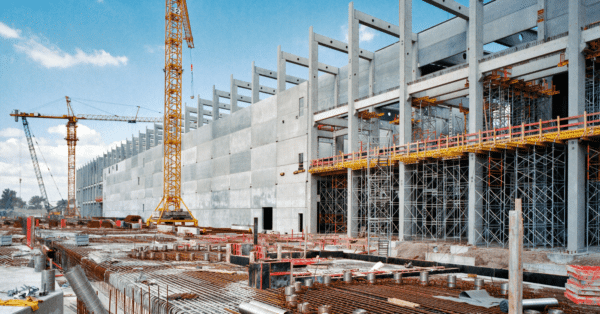The Wave Keeps Rolling Along
I like 2018.
It’s going to be a good year. I guarantee it.
Let’s look at the big picture for the United States:
- Interest rates will remain low.
- Oil prices are stable and will remain so.
- The U.S. will add 2,500,000 persons (as usual).
- Our nation will add 2,000,000+ jobs.
- The unemployment rate will be 4.0. to 4.5% (again).
- The rate of inflation for urban dwellers will again be less than one-quarter of 1.0% (exclusive of home prices).
- Finally, job openings will continue to rise.
- In January 2011, U.S. job openings totaled 2,939,000. Now they are at the 6,000,000+ level, a 10-year high mark.
Let’s not forget that one of President Trump’s key concerns is ensuring the continuing rise in value of his family’s hotels, commercial space and apartment projects. He knows that low interest rates, pro-real estate legislation and taxation, and a strong economy benefit him and his families (and, of course, others).
Focusing on population trends: In 2018, 45% of all the population gains will be in California, Texas and Florida. Despite hurricanes, floods, earthquakes, fires and pestilence, it doesn’t seem to make much of a difference. The big three just keep on growing.
Then, there’s the housing market:
In terms of total residential units permitted, 2018 will be the strongest housing market in a decade. That’s good, of course. However, single-family production is still meager. The 2004-2006 average production of single-family homes nationwide was 1,558,000 units. In 2017, it will be 850,000, about half of the 2004-2006 level. We project the 2018 total will rise to the 900,000 to 950,000 level, which is pretty good. What we are unable to incorporate into our projections is the total number of replacement units destroyed by hurricanes, floors and fire.
Multi-family projects, which are overwhelmingly apartments, have become a stronger part of the permit activity. In the past four years (including 2017), the average production was 445,000 multifamily units, up from 260,000 in the previous four years, for an increase of 70%.
I really like apartments, but recognize, in pure economic terms, that they have far less of a multiplier effect than single-family homes. Apartment dwellers don’t visit Home Depot every weekend. They don’t install pools, landscaping, wall and window coverings or spend elaborately on furnishings. Apartments just don’t pack the economic power of single-family homes.
In 2018, we will once again permit 450,000 to 475,000 multi-family units. Importantly, a larger percentage will be townhomes and other attached for-sale housing.
On the existing home scene, sales nationally will stand a pretty good chance of reaching the 6,000,000 level for the first time in more than a decade. I doubt if we will ever see sales rise to the 7,000,000 level as they did in 2005, but 6,000,000 is still pretty good. Sales prices of single-family homes nationally will continue to rise at a pace of 4% to 5% annually. In 2017, the average price of a resale single-family home nationally will be in the $250,000 range. (I know, we Californians can’t relate to that price range).
Now let’s turn to California. Legislatively, to the left of Lenin; businesswise, pure capitalism.
Once again, California will add 325,000 to 350,000 to the population and be on the cusp of hitting the 40-million mark. By way of comparison, Canada has a population of 37 million and Spain 46 million.
Job gains in 2017 edged downward from 2016. In 2016, the state added 266,000 jobs, but only 175,000 jobs in 2017. The good news is that construction jobs increased from 57,000 to 62,000 in 2017. It is highly possible that the increase would have been greater if labor were available.
In 2018, we project that job gains will once again be in the 175,000 to 200,000 range. Construction should be vibrant with a continuation of residential construction, in addition to a major boost in infrastructure (excluding the Central Valley train to nowhere).
In new residential construction, California finally passed the 100,000-unit mark in 2016 (barely, at 100,961) and will do it again in 2018. Single-family home production has been moving up steadily since 2011 and in 2018 will be in the 55,000- to 60,000-unit range. Multi-family production will also continue to rise, matching the 55,000 to 60,000 single-family production.
Perhaps the most exciting part of the construction industry in 2017 was the non-residential component. In both 2016 and 2017, non-residential construction in California topped more than $27 billion, the highest in state history and more than twice the 2011 figures.
We anticipate that in 2018, non-residential construction will top 28 billion with a major boost from infrastructure spending and renovation/additions. The latter category accounts for almost one-half of all non-residential spending.
Lastly, we are in a quandary about the impact of the new Tax Act for Californians. We recognize the state tax will no longer be deductible from the federal tax and there will be other limits on deductibility. Countering that will be the massive reductions in corporate taxes that should inure to the bottom lines of California businesses. Those reductions should result in more profits, which means higher dividends and distributions, higher stock prices and help to bolster California’s public pension funds. Overall, we are not convinced that the new Tax Act will have any meaningful impact on the business of California or its housing market.
In summary, it appears to me that 2018 is going to be another winning year for California. Perhaps the only thing that could hold the state back would be a dearth of entry-level labor reaching our shores or being forced to move out of the country. Those folks are the lifeblood of California’s economy.
This article was originally published by Xpera Group which is now part of The Vertex Companies, LLC.







